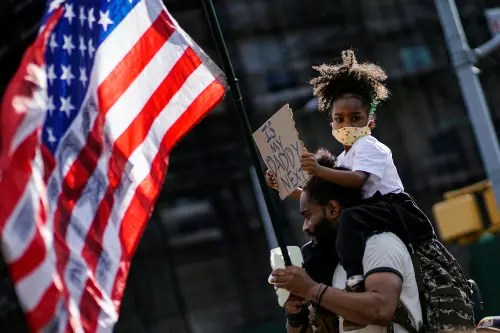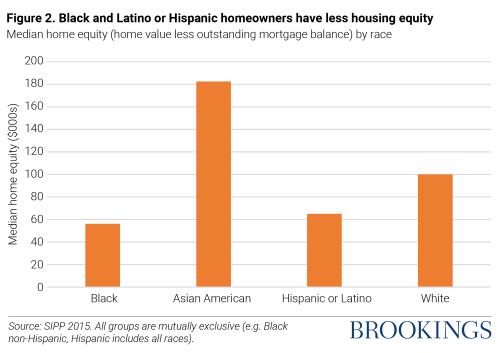In this edition of Charts of the Week: Black-white wealth gap, COVID-19’s challenge for working parents with children, and deaths of despair in the opioid crisis.
The Black-white wealth gap is rising
 William Gale writes on research he and co-authors have done on the Black-white wealth difference, controlling for a variety of factors including education and household income. For example, in 2016, the average Black household held $124,000 (or 54 percent) less wealth than the average white household. The median Black household reported $43,000 (or 56 percent) less wealth than the median white household. The chart above shows the gap (plus a 2-standard-deviation range for each measure). Gale notes that the “rise in median wealth gaps indicates that widening wealth disparities are not simply driven by outliers at the top or bottom of the wealth distribution.”
William Gale writes on research he and co-authors have done on the Black-white wealth difference, controlling for a variety of factors including education and household income. For example, in 2016, the average Black household held $124,000 (or 54 percent) less wealth than the average white household. The median Black household reported $43,000 (or 56 percent) less wealth than the median white household. The chart above shows the gap (plus a 2-standard-deviation range for each measure). Gale notes that the “rise in median wealth gaps indicates that widening wealth disparities are not simply driven by outliers at the top or bottom of the wealth distribution.”
“Without cultural change,” Gale concludes, “it is hard to see how public policies alone will be able to close the entire Black-white wealth gap.”
The challenge for working parents of school-age children during COVID-19
 Nicole Bateman notes that “parents with minor children comprise almost one-third of the country’s workforce,” and 23.5 million working parents with children under 14 at home likely have no other caregiver at home, meaning their return to work will depend on reopening schools and child care. As the map shows, workers in the Midwest are particularly likely to depend on childcare and school. “A full economic recovery simply cannot happen if children do not physically return to schools and child care programs,” Bateman says, but adds that recovery isn’t possible if COVD-19 cases skyrocket. See her post for additional data and analysis.
Nicole Bateman notes that “parents with minor children comprise almost one-third of the country’s workforce,” and 23.5 million working parents with children under 14 at home likely have no other caregiver at home, meaning their return to work will depend on reopening schools and child care. As the map shows, workers in the Midwest are particularly likely to depend on childcare and school. “A full economic recovery simply cannot happen if children do not physically return to schools and child care programs,” Bateman says, but adds that recovery isn’t possible if COVD-19 cases skyrocket. See her post for additional data and analysis.
Deaths of despair and the opioid crisis

In her paper for The Opioid Crisis in America series, Carol Graham examines the role of deaths of despair in deaths related to opioid abuse, especially among less-than-college educated white males. Graham argues that for policy interventions to be successful, “they must address the underlying causes of despair, such as lack of employment, sense of purpose, and hope for the future.”
The Brookings Institution is committed to quality, independence, and impact.
We are supported by a diverse array of funders. In line with our values and policies, each Brookings publication represents the sole views of its author(s).







Commentary
Charts of the Week: Racial wealth gap, COVID-19, deaths of despair
July 10, 2020